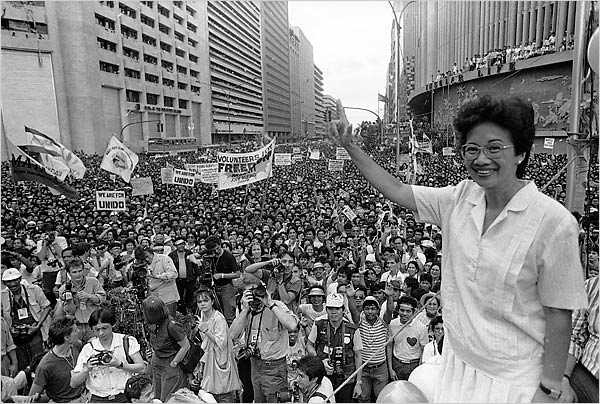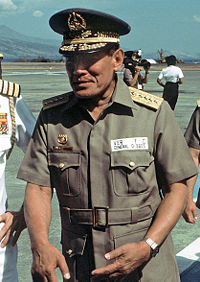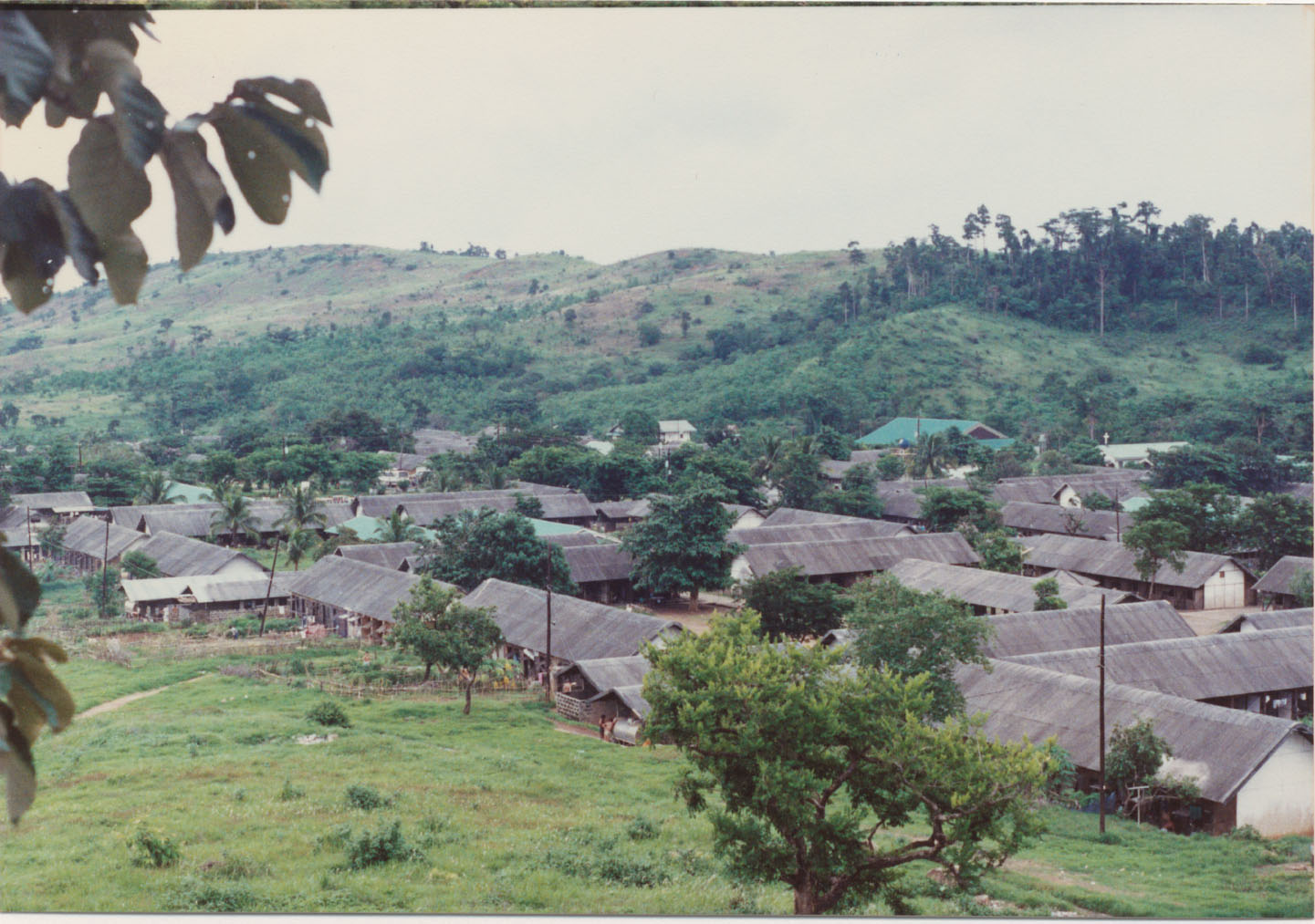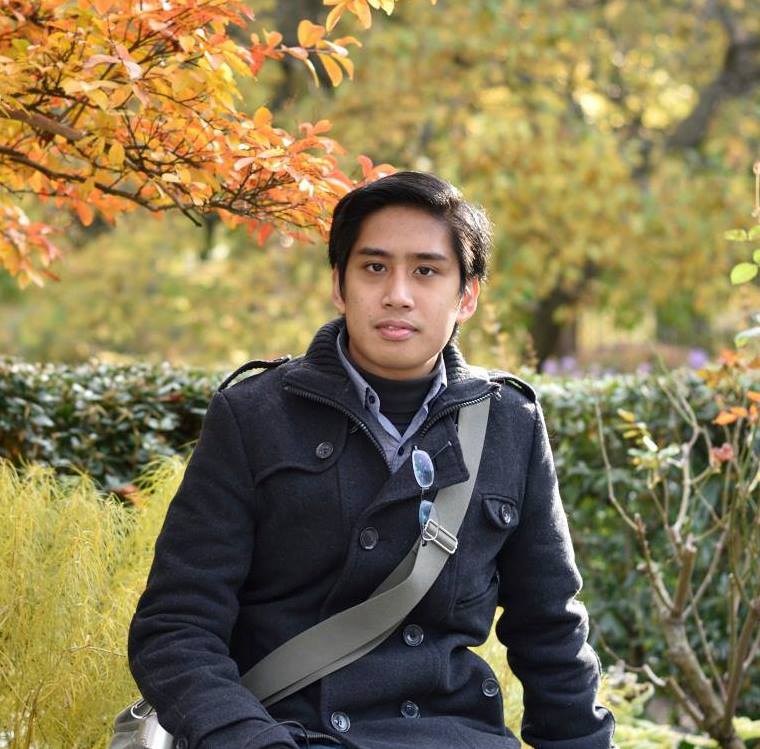This past February marked the thirtieth anniversary of the EDSA revolution. A generation has passed since Filipinos in the millions stared down the tanks and troops of the Marcos regime on Metro Manila’s main highway that the revolution was eventually named after. To those who lived through it, now reaching middle age, EDSA was an unbelievable, transformative, even spiritual experience of how faith and the people’s will could peacefully topple a dictator. For younger Filipinos without any memory of EDSA, it already seems dated and simply another chapter of the Philippines’ tumultuous political history. What exactly did EDSA accomplish? Thirty years on, why does it matter?It’s worth going back to September 1972 and the very beginning of martial law to fully understand the context of the events that toppled Marcos in February 1986. After a staged assassination attempt on Secretary of Defense Juan Ponce Enrile, Marcos declared martial law, granting himself powers far beyond those allowed to him under the Philippine constitution. Enrile was the architect of martial law, creating the legal and military framework for what would eventually be known as the Bagong Lipunan or “New Society.” According to Marcos, the New Society would transform Filipinos into strong, disciplined, and law abiding people. The instruments of change would be the armed forces and police, which Marcos would turn into the pillars of his regime.
 By the early 1980’s, cracks began to appear in Marcos’ rule. The Philippine economy, once one of Asia’s fastest growing, was in free fall and tens of millions of Filipinos lived in grinding poverty. To add insult to injury, Marcos and his family flaunted their ill gotten wealth as Filipinos faced more hardships. But the weakest link in the system was Marcos himself. He was suffering from a debilitating case of systemic lupus erythematosus, requiring kidney dialysis and extensive treatment that interfered with his ability to govern. Worst of all, he had alienated key figures responsible for upholding his regime. Defense Secretary Enrile, author of martial law, was isolated and dissatisfied with his position within the government. Marcos had also passed over Fidel V Ramos, a distant relative and high ranking general, for promotion to AFP Chief of Staff in favor of the incompetent but loyal Fabian Ver.
By the early 1980’s, cracks began to appear in Marcos’ rule. The Philippine economy, once one of Asia’s fastest growing, was in free fall and tens of millions of Filipinos lived in grinding poverty. To add insult to injury, Marcos and his family flaunted their ill gotten wealth as Filipinos faced more hardships. But the weakest link in the system was Marcos himself. He was suffering from a debilitating case of systemic lupus erythematosus, requiring kidney dialysis and extensive treatment that interfered with his ability to govern. Worst of all, he had alienated key figures responsible for upholding his regime. Defense Secretary Enrile, author of martial law, was isolated and dissatisfied with his position within the government. Marcos had also passed over Fidel V Ramos, a distant relative and high ranking general, for promotion to AFP Chief of Staff in favor of the incompetent but loyal Fabian Ver.
An even more volatile element was added to this combustible mix of power politics. Gregorio “Gringo” Honasan was a young, ambitious, and charismatic military officer whose career, along with many others in his generation, had been put on hold by Marcos’ preference for older, more reliable cronies. The President refused to allow Honasan and other young officers to rise in rank lest they displace the power and positions of older generals and admirals personally loyal to him. Honasan created a secret organization within the military which came to be known as RAM, the Reform of the Armed Forces Movement. RAM was filled by angry young officers, many from elite Special Forces units, all eager for a chance to shake up the military and government hierarchy. Defense Secretary Enrile was quick to see the potential in such a group and quietly cultivated Honasan as his protégé.

As Marcos’ health declined, the power of the opposition grew, especially around the fiery and eloquent Senator Ninoy Aquino. Aquino had been imprisoned during the 70’s but released and sent to the United States for a life-saving operation. There, he became a lightning rod of opposition against Marcos’ regime. Upon his return to the Philippines on August 21, 1983, he was assassinated, with the culprits responsible for ordering his death unknown to this day. In the court of public opinion, Marcos was guilty of Ninoy’s death and rather than squelching the opposition, resistance to his rule increased, now coalescing around Ninoy’s widow, Corazon Aquino.
This was the stage in the middle of the 1980’s in the waning years of the Marcos regime. Enrile and Honasan were biding their time for an opportune moment to strike at the ailing dictator, knowing the poor state of his health. At the same time, Cory Aquino had become the face of the opposition. Because of her status as a housewife, political outsider, and widow of the martyred Ninoy, she proved extremely difficult for Marcos loyalists to attack or defame. Showing one final spark of the political daring and intuition that brought him to the Presidency two decades before, Marcos called for a snap election to prove once again his popularity and mandate to rule. As Cory and Marcos began to campaign, Enrile and Honasan began planning a coup. All their destinies would come together during four spectacular days from February 22 to 25, 1986.
 Fearful of the real result, Marcos and his loyalists rigged the election in their favor. The fraudulent Marcos victory was denounced by international observers and the Philippines’ own Committee on Elections, or COMELEC. The powerful Catholic Bishops’ Conference of the Philippines also opposed the result. But the real action would come from Enrile and Honasan’s disgruntled rebel officers. Sensing the regime’s weakness, Honasan planned a coup in which the commandos would seize Malacanang Palace, TV stations, and key military bases around Metro Manila. It’s an important point to remember that EDSA did not begin as a spontaneous expression of people power against dictatorship. In its original form, the toppling of Marcos would have been a violent takeover with Filipinos killing each other in the streets of Manila. Unfortunately for the would-be revolutionaries, and miraculously for the Filipino people, loyalist officers discovered Honasan’s plans and Marcos ordered the arrest of Honasan and the other coup leaders.
Enrile and Honasan scrambled as Marcos turned the tables on them. It was now, that Enrile showed his skills as a consummate politician and insider. He contacted Fidel Ramos, head of the Philippine Constabulary (today the PNP) and asked for his support. The rebels who had once planned to attack the Presidential Palace now holed up inside Camp Crame and Camp Aguinaldo. Though Marcos could have ordered his vastly superior forces to crush the rebels immediately, he opted to negotiate. It was a critical error. Ramos and Enrile bought time negotiating with the dictator as Ramos convinced military units all over the country to change sides. Ramos was still resentful of being passed over for the top job in the Philippine military, AFP Chief of Staff, and was far more respected in the military than Fabian Ver, Marcos’ top crony in uniform.
The most powerful endorsement of the rebels came from Jaime Cardinal Sin. Cardinal Sin and other church leaders urged their parishes and religious orders to go out and support the rebels, even at personal risk. Led by priests, monks, and nuns, some two millions Filipinos streamed onto EDSA, concentrating around Camp Crame and Camp Aguinaldo. Now, even if Marcos ordered his men to attack, they would not be able to defeat the rebels without killing untold numbers of fellow Filipinos. With Enrile, Ramos, Cardinal Sin, and the teeming millions of Metro Manila out in the streets against him, the balance of power had shifted decisively against Marcos. Military units faded away and joined the rebels until finally, Marcos was only master of Malacanang. A US military helicopter whisked him and his family out of the palace to a base in Ilocos, then to a plane towards exile in Hawaii. In the next few days, thousands of Filipino would wander wide eyed through Malacanang Palace, discovering Marcos’ dialysis machine and Imelda’s infamous shoe collection.
After two decades in power, the most formidable President in modern Philippine history practically faded away. Though the plot devised to overthrow him called for violence and bloodshed, there had been virtually none. The most iconic images of this peaceful revolution would come from EDSA itself, where nuns prayed the rosary in the face of soldiers and tanks. It was not hyperbole for many Filipinos to describe the events of the EDSA revolution as a miracle. Continuing the dictatorship, civil war, and all the worst case scenarios involving bloodshed and loss of life had been avoided.
Perhaps the political miracle was the involvement of millions of Filipinos once the revolution was underway. The presence of the masses in the revolution transformed what would have been a violent, selfish grab for power by Marcos insiders into a noble, heroic effort where the Filipino people were the true heroes. Because of “People Power”, Cory Aquino would become President and return legitimate, constitutional government to the Philippines. The age of martial law and military rule was firmly ended. Because of the unlikely, maybe even miraculous events of EDSA, young Filipinos grew up in a country that was not destroyed by civil war or still enduring a corrupt dictatorship. A fragile respect for the rule of law returned to the country after EDSA, spearheaded by Cory Aquino and other reformers, seeking to repair the damage done by martial law.
Of course, EDSA did not right all the wrongs done during martial law. Many of those who disappeared were never found and many who had committed terrible crimes were never brought to justice. The Marcos family, for better or for worse, has returned to politics. Imelda Marcos is a representative in Congress, with son Bongbong a Senator, and daughter Imee governor of the province of Ilocos Norte. The Aquinos became a political dynasty of the first class because of the actions of Ninoy, then Cory once she was President. Corazon Aquino and her son Benigno Aquino III are the only mother and son to have become Presidents of the Philippines. For Ramos, because of his leadership during EDSA and the respect he commanded in the military, he became Defense Secretary under Corazon Aquino, then President in his own right in 1992. Gringo Honasan and Juan Ponce Enrile are still in politics as well, both as senators.
Though some of its key figures are still with us, the EDSA revolution is gradually fading into the background. While it was imperfect, it remains an example of how a nation can avoid breaking upon the rocks of civil war and domestic strife. For Filipinos too young to remember or who were born afterward, we owe a peaceful childhood and upbringing to those three days in February thirty years ago.
Fearful of the real result, Marcos and his loyalists rigged the election in their favor. The fraudulent Marcos victory was denounced by international observers and the Philippines’ own Committee on Elections, or COMELEC. The powerful Catholic Bishops’ Conference of the Philippines also opposed the result. But the real action would come from Enrile and Honasan’s disgruntled rebel officers. Sensing the regime’s weakness, Honasan planned a coup in which the commandos would seize Malacanang Palace, TV stations, and key military bases around Metro Manila. It’s an important point to remember that EDSA did not begin as a spontaneous expression of people power against dictatorship. In its original form, the toppling of Marcos would have been a violent takeover with Filipinos killing each other in the streets of Manila. Unfortunately for the would-be revolutionaries, and miraculously for the Filipino people, loyalist officers discovered Honasan’s plans and Marcos ordered the arrest of Honasan and the other coup leaders.
Enrile and Honasan scrambled as Marcos turned the tables on them. It was now, that Enrile showed his skills as a consummate politician and insider. He contacted Fidel Ramos, head of the Philippine Constabulary (today the PNP) and asked for his support. The rebels who had once planned to attack the Presidential Palace now holed up inside Camp Crame and Camp Aguinaldo. Though Marcos could have ordered his vastly superior forces to crush the rebels immediately, he opted to negotiate. It was a critical error. Ramos and Enrile bought time negotiating with the dictator as Ramos convinced military units all over the country to change sides. Ramos was still resentful of being passed over for the top job in the Philippine military, AFP Chief of Staff, and was far more respected in the military than Fabian Ver, Marcos’ top crony in uniform.
The most powerful endorsement of the rebels came from Jaime Cardinal Sin. Cardinal Sin and other church leaders urged their parishes and religious orders to go out and support the rebels, even at personal risk. Led by priests, monks, and nuns, some two millions Filipinos streamed onto EDSA, concentrating around Camp Crame and Camp Aguinaldo. Now, even if Marcos ordered his men to attack, they would not be able to defeat the rebels without killing untold numbers of fellow Filipinos. With Enrile, Ramos, Cardinal Sin, and the teeming millions of Metro Manila out in the streets against him, the balance of power had shifted decisively against Marcos. Military units faded away and joined the rebels until finally, Marcos was only master of Malacanang. A US military helicopter whisked him and his family out of the palace to a base in Ilocos, then to a plane towards exile in Hawaii. In the next few days, thousands of Filipino would wander wide eyed through Malacanang Palace, discovering Marcos’ dialysis machine and Imelda’s infamous shoe collection.
After two decades in power, the most formidable President in modern Philippine history practically faded away. Though the plot devised to overthrow him called for violence and bloodshed, there had been virtually none. The most iconic images of this peaceful revolution would come from EDSA itself, where nuns prayed the rosary in the face of soldiers and tanks. It was not hyperbole for many Filipinos to describe the events of the EDSA revolution as a miracle. Continuing the dictatorship, civil war, and all the worst case scenarios involving bloodshed and loss of life had been avoided.
Perhaps the political miracle was the involvement of millions of Filipinos once the revolution was underway. The presence of the masses in the revolution transformed what would have been a violent, selfish grab for power by Marcos insiders into a noble, heroic effort where the Filipino people were the true heroes. Because of “People Power”, Cory Aquino would become President and return legitimate, constitutional government to the Philippines. The age of martial law and military rule was firmly ended. Because of the unlikely, maybe even miraculous events of EDSA, young Filipinos grew up in a country that was not destroyed by civil war or still enduring a corrupt dictatorship. A fragile respect for the rule of law returned to the country after EDSA, spearheaded by Cory Aquino and other reformers, seeking to repair the damage done by martial law.
Of course, EDSA did not right all the wrongs done during martial law. Many of those who disappeared were never found and many who had committed terrible crimes were never brought to justice. The Marcos family, for better or for worse, has returned to politics. Imelda Marcos is a representative in Congress, with son Bongbong a Senator, and daughter Imee governor of the province of Ilocos Norte. The Aquinos became a political dynasty of the first class because of the actions of Ninoy, then Cory once she was President. Corazon Aquino and her son Benigno Aquino III are the only mother and son to have become Presidents of the Philippines. For Ramos, because of his leadership during EDSA and the respect he commanded in the military, he became Defense Secretary under Corazon Aquino, then President in his own right in 1992. Gringo Honasan and Juan Ponce Enrile are still in politics as well, both as senators.
Though some of its key figures are still with us, the EDSA revolution is gradually fading into the background. While it was imperfect, it remains an example of how a nation can avoid breaking upon the rocks of civil war and domestic strife. For Filipinos too young to remember or who were born afterward, we owe a peaceful childhood and upbringing to those three days in February thirty years ago.






